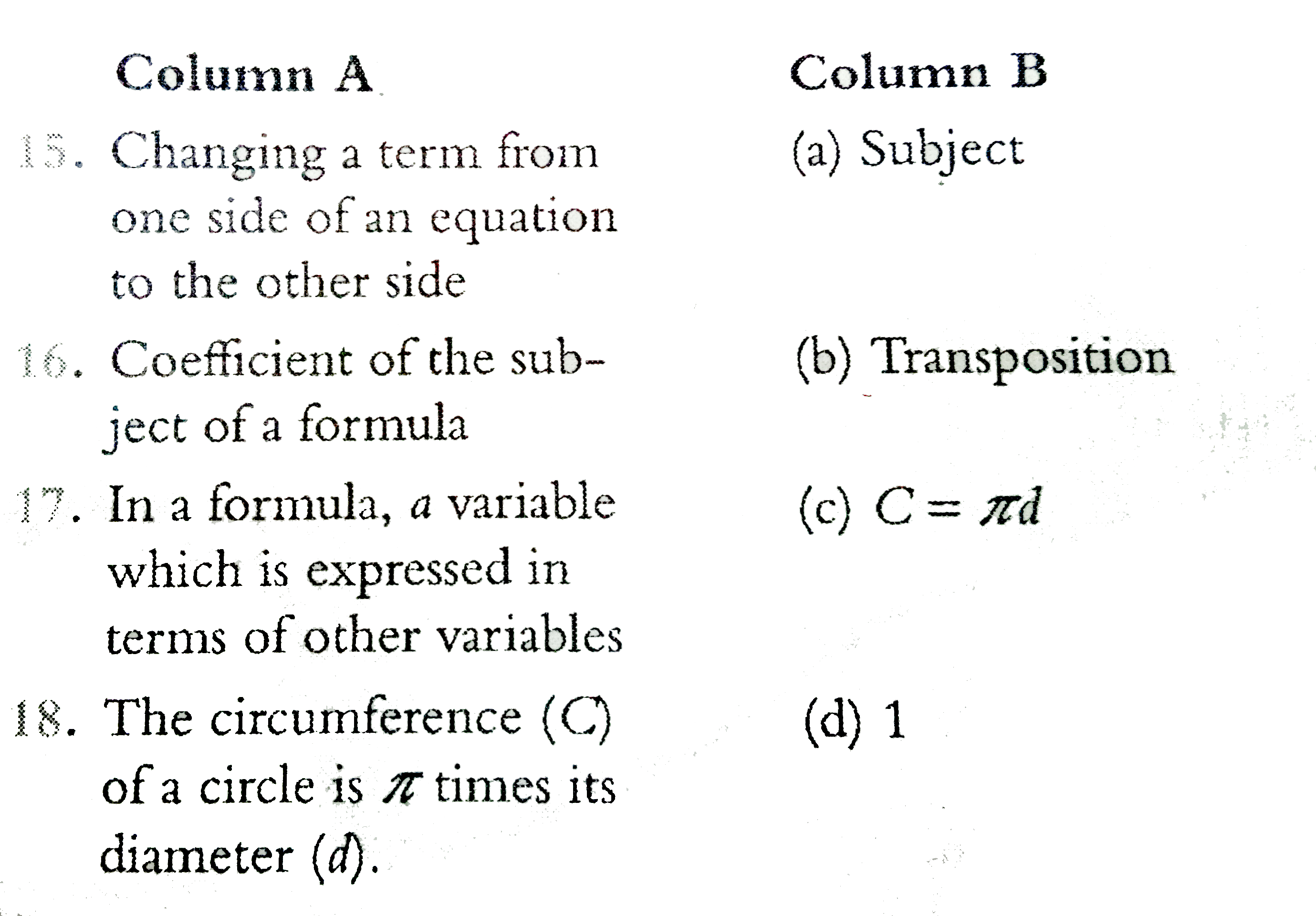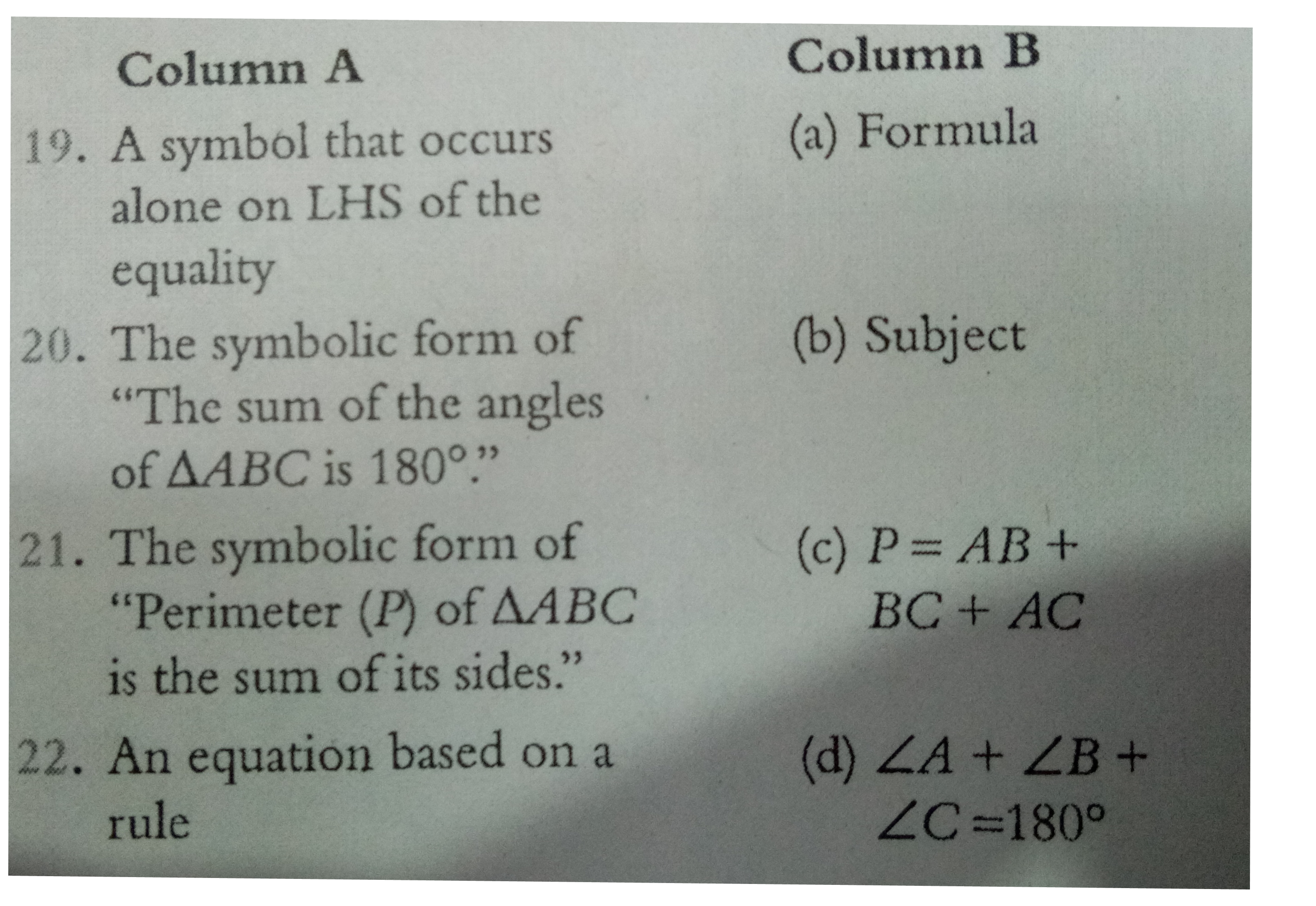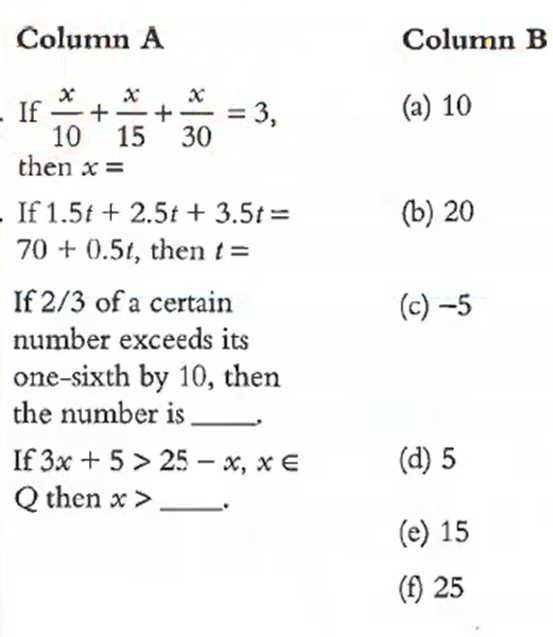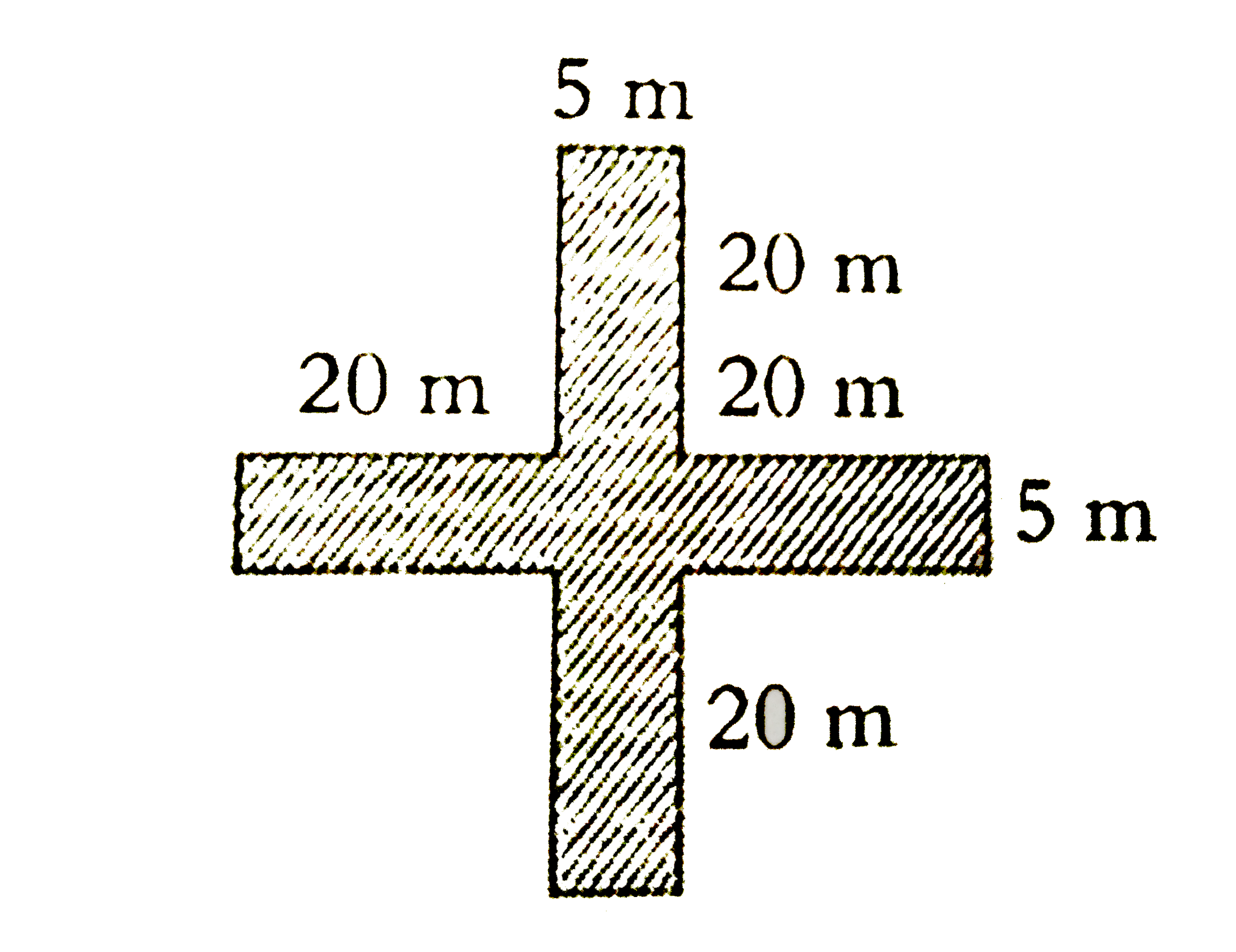The correct Answer is:A→Q;B→R;C→S;D→P
Step by step video & image solution for by Maths experts to help you in doubts & scoring excellent marks in Class 12 exams.
Updated on:21/07/2023Topper's Solved these Questions
- BIONMIAL THEOREMBOOK - VIKAS GUPTA (BLACK BOOK) ENGLISHCHAPTER - BIONMIAL THEOREMEXERCISE - Exercise-4 : Subjective Type Problems
15 Videos
- BIONMIAL THEOREMBOOK - VIKAS GUPTA (BLACK BOOK) ENGLISHCHAPTER - BIONMIAL THEOREMEXERCISE - Exercise-2 : One or More than One Answer is/are Correct
9 Videos
- AREA UNDER CURVESBOOK - VIKAS GUPTA (BLACK BOOK) ENGLISHCHAPTER - AREA UNDER CURVESEXERCISE - AXERCISE (SUBJECTIVE TYPE PROBLEMS)
8 Videos
- CIRCLEBOOK - VIKAS GUPTA (BLACK BOOK) ENGLISHCHAPTER - CIRCLEEXERCISE - Exercise - 5 : Subjective Type Problems
13 Videos
Similar Questions
The sum of series 3⋅2007C0−8⋅2007C1+13⋅2007C2−18⋅2007C3+…… upto 2008 terms is K, then K is :
View SolutionThe number N=20C7−20C8+20C9−20C10+…..−20C20 is divisible by :
View SolutionFind function f(x) which satisfy the relation f(xy)=f(x)f(y)∀x,y∈R,y≠0,f(y)≠0andf'(1)=2
View SolutionTangents are drawn to circle x2+y2=1 at its iontersection points (distinct) with the circle x2+y2+(λ−3)x+(2λ+2)y+2=0. The locus of intersection of tangents is a straight line, then the slope of that straight line is .
View SolutionHow many lines of symmetry does the above figure have ?
View SolutionWhich of the following are correct chain isomers of butane ? (i)
View SolutionDetermine the point of symmetry of a regular hexagon.
View SolutionDtermine the images of the following figure about the given line :
View SolutionMatch the following Column A to Column B

View SolutionMatch the following Column A to Column B

View SolutionMatch the following Column A to Column B

View SolutionFind the area of the figure given below.

View SolutionThe area of the shaded part in the figure given below is ______.

View SolutionThe inequation represented by the graph given below is :
View SolutionThe inequation that best describes the graph given below is _________
View SolutionThe inequation that best describes the following graph is _________
View Solution


